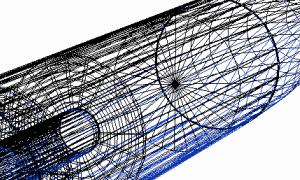 E-cig brands and manufacturers should pay more attention to product design, all the way from components to packaging, an industry conference was told this week.
E-cig brands and manufacturers should pay more attention to product design, all the way from components to packaging, an industry conference was told this week.
Delegates at the TobaccoCampus event in Wiesbaden, Germany, heard that a more thoughtful approach to component choice can make production and compliance simpler, while opportunities exist to target specific market subsectors through packaging design.
Many e-cigarettes have a large number of component parts despite being relatively simple devices in principle, and involve complex insulation and finishing processes, according to Wendy Johnson, medical marketing manager for Celanese in the Netherlands and leader of the global chemicals and materials company’s e-cig team.
But “surely it’s advantageous to choose as few materials as you can”, she said. “It sometimes pays to use more expensive materials but use a product that has thinner walls and still meets the mechanical specifications that you need,” for example by using fewer, more sophisticated injection-moulded parts that can each perform multiple functions.
She cited the example of the casings for medical inhalers, where the inside surface is functional rather than just a container for the rest of the components.
Designing for automated assembly – which is becoming increasingly common in e-cig manufacture – is also a must, according to Johnson, who said “hand assembly is something from the 1920s”. Indeed, Dac Sprengel, president of the German e-cig trade association VdeH, said at the same event that he expects production in Europe to be fully automated within four months.
Right first time
Product designers can aid compliance by thinking long-term, Johnson added. “You don’t want to change your device. If you get it wrong in the first generation it’s very expensive to change that and submit another dossier” for regulators. E-cig companies should also “be aware that you cannot just swap one supplier for another and expect the materials to perform exactly the same”.
Compliance can also be helped by reducing secondary processes such as painting, gluing and welding, which can lead to toxicological issues. “In an inhaled nicotine device, you don’t want paint chipping from components – I’ve seen that in several devices and it smacks of very poor quality,” said Johnson.
Considering the use of medical-grade materials can help too, she said. “The biggest blessing is the management of change. Any changes that might impact the quality of the material will be notified [by the supplier] to the customer,” possibly as long as years in advance.
“I hope that several companies will develop product that is on the same level as an Apple product. I don’t think it’s there yet,” said Johnson, a sentiment echoed by James Reed, head of development for Essentra Filter Products in the UK: “Products are designed with what is available and not necessarily fit for purpose,” he contended.
Look and feel
At the other end of the production process, e-cig firms should also give more thought to packaging design, said Paul Jenkins, insight director of British packaging specialist CME, which works in the tobacco, beverage and pharma sectors.
“You cannot detach the packaging from the product. It is part of the product,” Jenkins argued, able to deliver such selling points as sustainability and ease of use. But “it’s hard to imagine another category in the world that has such a non-uniform packaging format. It’s just incredible.”
Products “should be segmented, not just male/female and young/old – there are opportunities to find lots of segments, by geography, smoking occasion and so on, and packaging can play a role in that”, said Jenkins.
Important current trends in packaging that he identified include:
- Consumption on the go – meaning e-cig packs that can be opened one-handed, for example.
- Packaging that adds functionality.
- Personalisation – “particularly with online e-cigarette purchases, why can’t there be a function where you can have your name on the package? The technology’s there, the interface is there.”
- Visual differentiation – important because of the growing number of products competing for attention in retailers.
Packaging innovations for the e-cig market could, suggested Jenkins, include:
- Ease of opening.
- On-the-go battery charging.
- Intelligence, for example a pack that notifies consumers of the product’s nearest stockist.
What This Means: Undoubtedly many (though far from all) e-cigarette brands have rushed to market without putting in the design time that a more mature consumer product would be afforded. This is only likely to change for the better with regulation, automated manufacturing, plus a deeper understanding of both the science and the consumer all contributing.
– Barnaby Page ECigIntelligence staff
Photo: Steve Jurvetson






